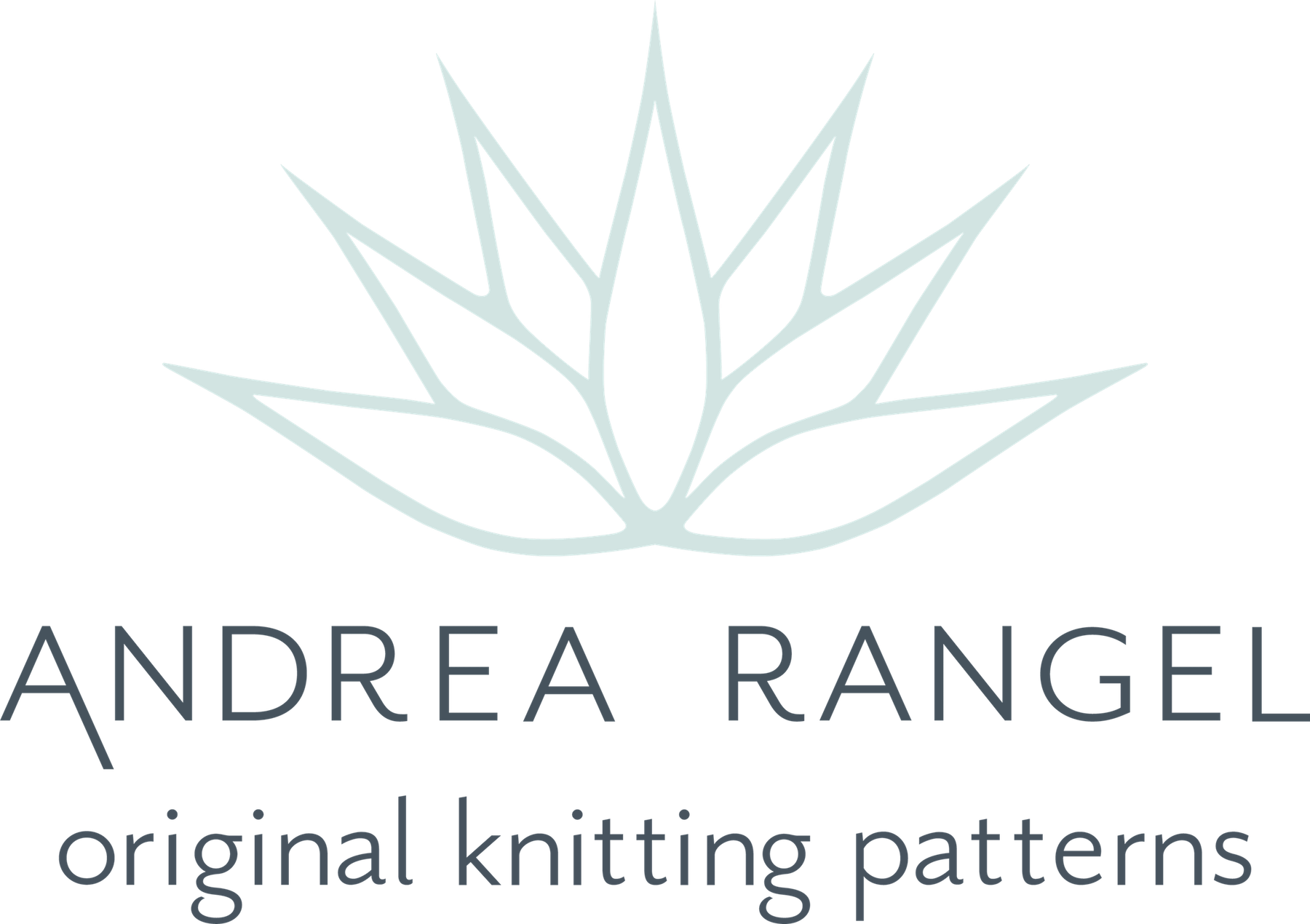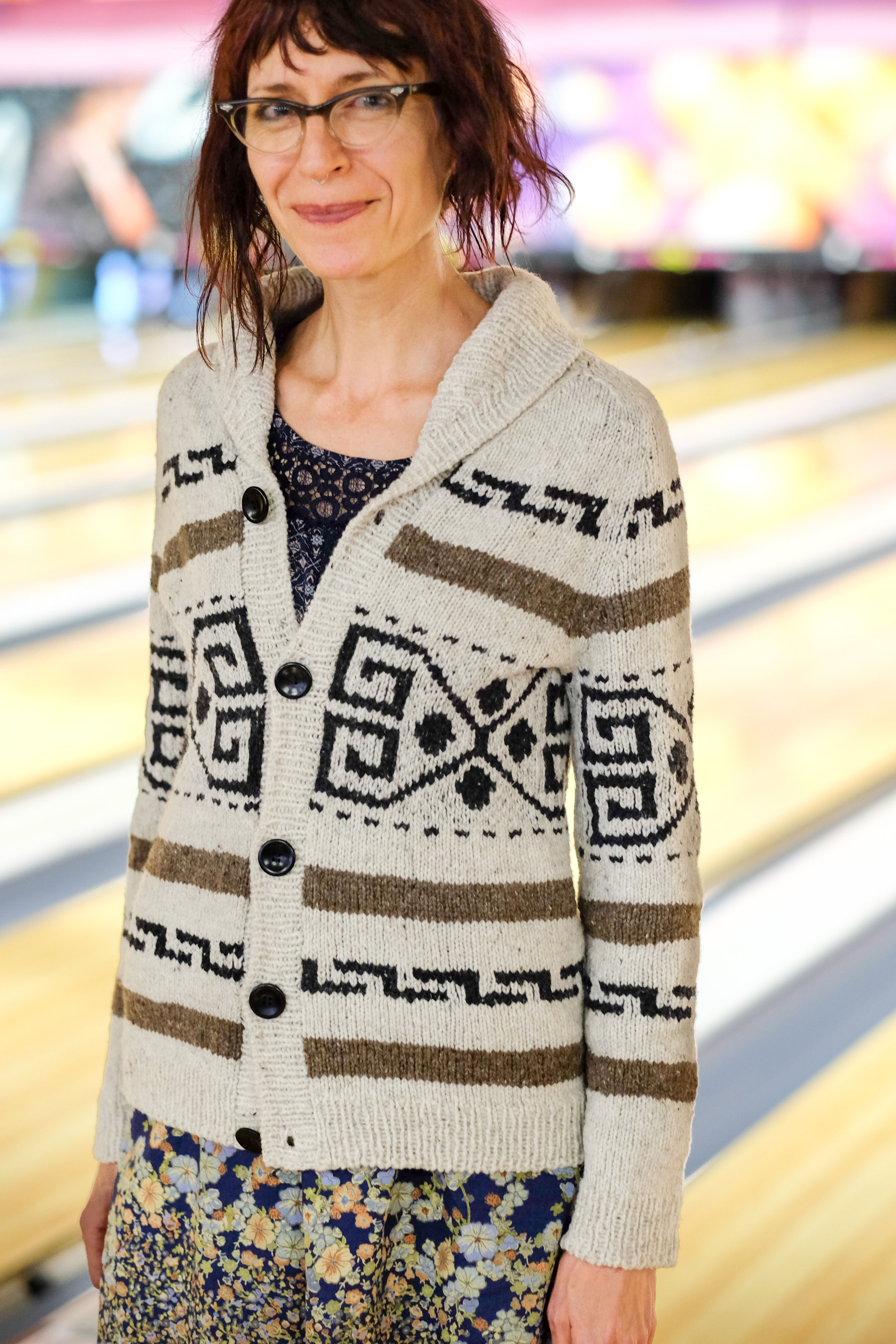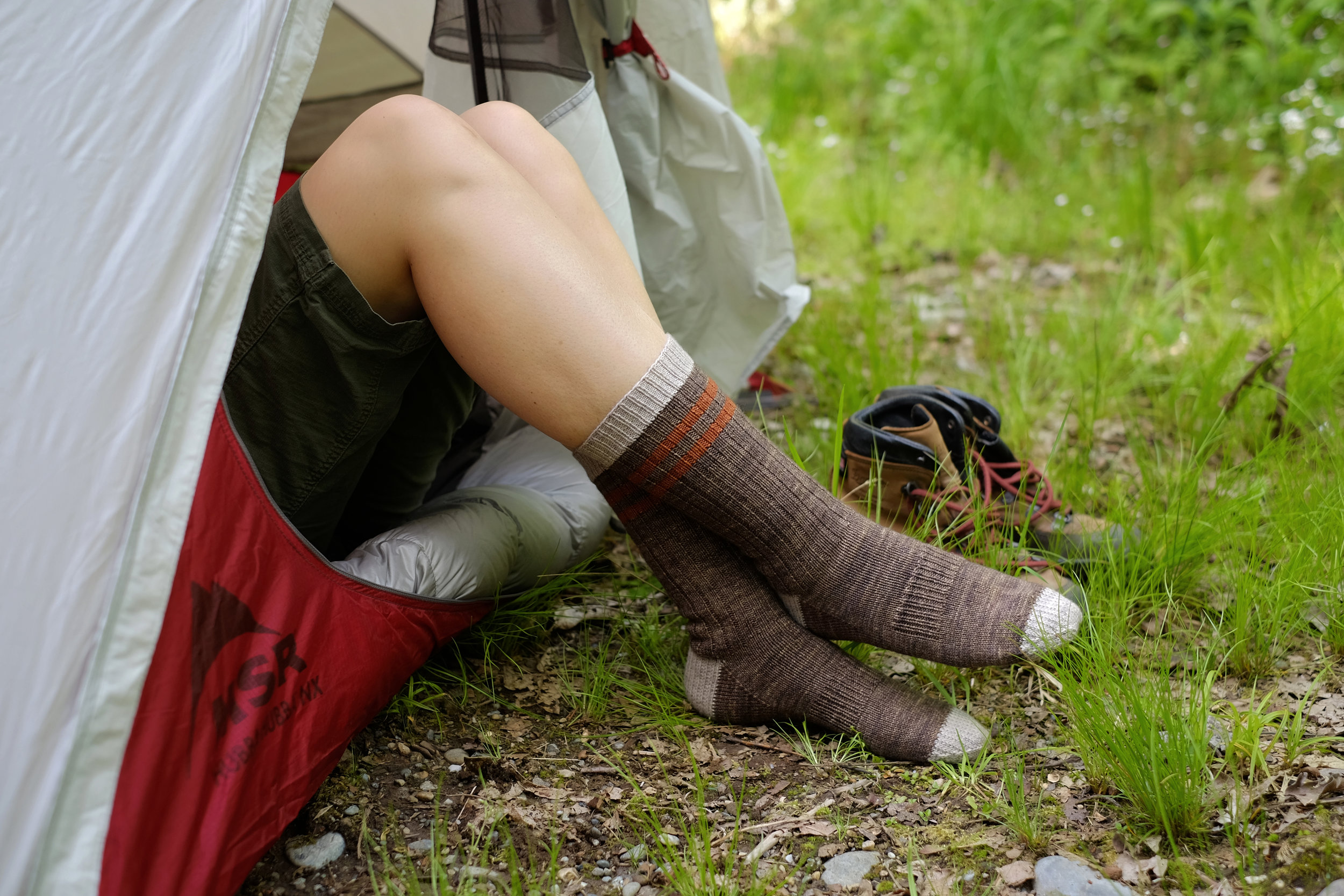Swatching in the Round
If your project is worked in the round, then it's important to swatch in the round. That's because most of us work our stitches at a slightly different gauge when we're working knit rows and purl rows (or pattern rows on RS and WS rows.) If you make your swatch flat, you're unlikely to get the same results as you would if you worked in the round, and your swatch gauge won't be accurate. There are several different methods for swatching in the round and they all have pros and cons. Here are a couple of common methods.
Small Tube Method
The colorwork here is from AlterKnit Stitch Dictionary & the swatch is worked in Brooklyn Tweed Loft.
I prefer to work my circular swatches as small-circumference tubes that look a lot like tiny socks. I use the magic loop method and find this to be pretty accurate for me. Most of the time I cut the tube along the beginning of round before blocking so that I can measure the whole swatch flat.
How it's Done
Cast on about 6 in/15 cm-worth of stitches. Join for working in the round and work your stitch pattern until your swatch is about 6 in/15 cm tall. Bind off. Then take some nice sharp scissors and cut the swatch open. Block and pin. After it's dry, pull out the pins and wait a few hours before measuring to allow the stitches to relax into their final gauge.
Alternately, if you're swatching for a sweater, you can cast on for a sleeve, work the cuff, then about 6 in/15 cm, then block and measure it without cutting of course. I like to place my stitches on waste yarn and wet block without cutting the main ball of yarn. If my gauge is correct, I can just place the stitches back on the needle and carry one. If the gauge is off, though, I'll unravel and try again.
Pros
This is a really straightforward method. I find it to be the least finicky.
Cons
- It may not always be accurate. A lot of knitters knit more tightly at a small-circumference because working with magic loop or DPN's is just different than knitting with a regular circular needle. Lots of us will tug our yarn more. That means that for a lot of knitters, this method won't be accurate. If you find you have to work your sleeves on a larger needle or your small-circumference knitting is tighter than your regular knitting (like sweater bodies), this is probably not going to be an accurate method for you. See below for an alternate way.
- Some fibres aren't well-suited for cutting. When I'm working colorwork, particularly in sticky, woolen spun yarns, I don't hesitate to cut my swatches without any kind of reinforcement. Stitches just aren't inclined to unravel sideways and swatches won't be worn, so it isn't a problem. But if you're knitting with cotton or other slippery fibres, you may get your stitches pulling out of the edges more than you like. You don't have to cut your swatches, but it's a little trickier to measure them if they're small tubes than if they're laying flat.
- If you cut your swatch, that yarn cannot be re-used. If you've got plenty of extra yarn, that's fine, but if you're cutting it close, remember that with this method you can't unravel and re-use your swatch yarn.
In this video, I was cutting a swatch with clear edges. I added those edges that because the swatch was for my book AlterKnit Stitch Dictionary and each swatch had to be perfectly neat for photography. Normally I don't add any special edges to my swatches.
Stranding Along the Back Method
In order to swatch for circular knitting, you don't have to knit a whole tube. The important thing is just that you work every row as a RS row and don't work any WS rows.
How it's Done
Again, cast on about 6 in/15 on a circular needle, but don't join for working in the round. Instead, work a RS row to the end. Then, instead of turning and working back the other way, slide your stitches back to the other end of the needle so you're ready to work another RS row. Strand your working yarn along the back. It should be about the same length as your swatch is wide. Continue in this way until your swatch is about 6 in/15 cm tall and bind off. You can cut the strands if they've become too tight to allow your swatch to lay flat, or you can just leave them stranding along the back. Block and measure.
Pros
This method allows you to work only RS rows without making a tube, thus it can be more accurate for some knitters.
Cons
- Your edges will be sloppy. The stitches at the beginning and end of the row will inevitably be loose as you work. You can snug them up, but they'll get loose again. That means it's really important to make a large swatch because the first and last inches of your swatch are unlikely to be accurate.
- It's hard to make those strands just the right length. l always end up with my strands too long or too short, which I find annoying. It doesn't actually matter because you can just cut up the centre of your strands to allow your swatch to be flat, but I don't love it. If you want to make your swatch a bit neater, I recommend trimming your strands to about 1.5 in/4 cm. The same caveat about cutting applies as above - if you cut your yarn, you won't be able to re-use it.
Some General Swatching Tips
- Record your needle size right away - maybe this is in a notebook or on the yarn label, or maybe mark the swatch itself by creating yo/k2tog's to indicate the size or tying knots in the tail. Just don't leave this step out and assume you'll remember. You will not remember.
- Measure in several places, then average your measurements for a more accurate gauge.
- If you're having trouble measuring row gauge, use a knitting needle to separate out each row as you count. It can be easy to think one row is two or skip one altogether, particularly with fuzzier yarns.
- If you need to re-use yarn from your swatch, be sure not to cut your swatch open. You can do this by just measuring your tube if you used that method, or being extra careful that your long strands across the back of your swatch are long enough for your swatch to lay flat.
- If your unraveled yarn is very kinky, wind it around the back of a chair to get it back into hank form, steam it, then wind it back into a ball after it's dry.




